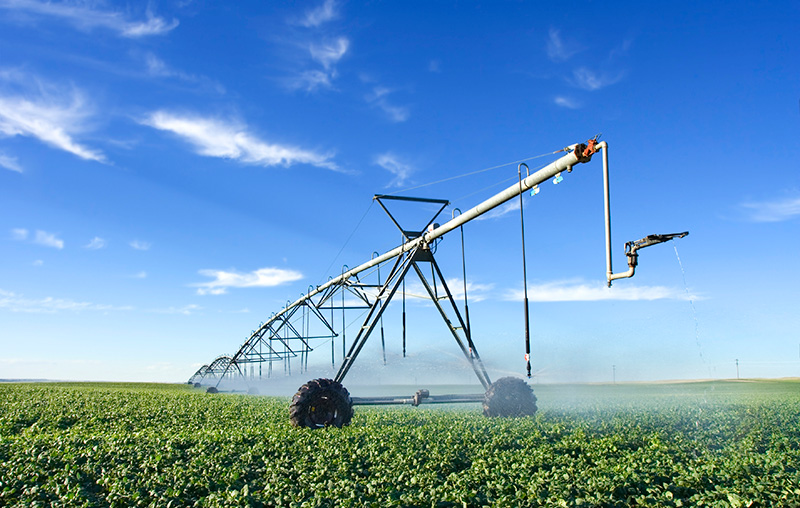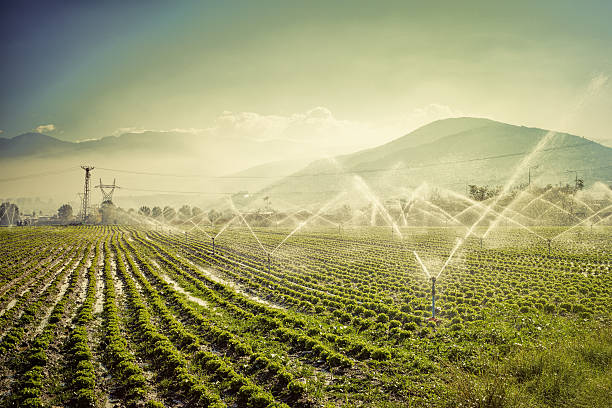In accordance with the instructions in the Crop Insurance Handbook, FCIC-18010, approved insurance providers (AIPs) are to provide a copy of the following Irrigated Practice Guidelines to all insureds for whom the irrigated practice may apply.
These guidelines are provided to enable insureds to properly report planted or perennial acreage insured under an irrigated practice consistent with their crop insurance policy. It is important these guidelines be utilized to document whether, at the time insurances attaches, there is a reasonable expectation of receiving adequate water to carry out a good irrigation practice for acreage reported under the irrigated practice. The guidelines, in entirety, are substantive and are to be given to the insured in administration of their crop insurance policy.

1. Definitions
The following definitions are provided to facilitate a uniform understanding of the standards and guidelines for insuring an irrigated practice for planted or perennial crop acreage.
A. Adequacy of Irrigation Facilities - Irrigation facilities are considered adequate if it is determined that, at the time insurance attaches, to planted or perennial acreage, they will be available and usable at the times needed and have the capacity to timely deliver water in sufficient quantities to carry out a good irrigation practice for the acreage insured under the irrigated practice.
B. Efficient Irrigation - Carrying out a good irrigation practice using a lesser amount of irrigation water than historically applied, but still achieving the irrigated APH yield by implementing improved or enhanced management practices to increase efficiency of irrigation water use.
Enhanced management practices to increase efficiency of irrigation water use include, but are not limited to, the following:
- Irrigation Method - Employing an irrigation water distribution technique or technology that has demonstrated greater efficiency (e.g. converting gravity flood irrigation to a center pivot or underground drip tape).
- Converting high pressure impact sprinklers to low pressure impacts under center pivot irrigation.
- Soil Moisture Monitors - Using soil moisture monitor output
C. Good Irrigation Practice - The application of adequate water in an acceptable manner, at the proper times, to allow production of a normal crop which is often identified as the approved APH yield for crops.
D. Irrigation Equipment and Facilities – The physical resources, other than water, used to regulate the flow of water from a water source to the acreage. This includes pumps, valves, sprinkler heads, and other control devices. It also includes pipes or pipelines which: (1) are under the control of the insured or (2) routinely deliver water only to acreage which is owned or operated by the insured. A center pivot system is considered irrigation equipment and facilities.
E. Irrigation Water Supply – The water source and means for supplying irrigation water, without regard to the equipment or facilities. This includes the water source and dams, canals, ditches, pipelines, etc., which contain the water for movement from the source to the acreage and (1) are not under the control of the insured or (2) routinely deliver water to acreage in addition to that which is owned or operated by the insured. It DOES NOT INCLUDE any irrigation equipment or facilities.
F. Reasonable Expectation of Adequate Water - The insured had no reason to know at the time coverage began the amount of irrigation water may be limited or reduced. No reasonable expectation exists if the insured knew, or had reason to know, the amount of irrigation water may be reduced before coverage begins.
G. Water Source – The source from which water is made available. This includes wells, lakes, reservoirs, streams, aquifers, etc.
2. Requirements
- Be able to document and demonstrate that there is a reasonable expectation of adequate water (refer to section below);
- Be able to document and demonstrate good irrigation practices;
- Be able to demonstrate that they have adequate irrigation equipment and facilities;
- Provide verifiable documentation to their AIP by the ARD that the irrigation water supply has replenished after a failure of the irrigation water supply prevented the insured from planting or the insured had a failure of irrigation water supply; and
- Keep separate production records for acreage insured under an irrigated practice from acreage insured under a practice other than irrigated (or with no practice applicable) and uninsured acreage.
3. Determination of Reasonable Expectation of Adequate Water
- Most recent 10-year historical average of available water and any applicable forecasting data from a credible authority responsible for monitoring and forecasting such conditions such as Irrigation Districts, State Department of Water Resources, Bureau of Reclamation, Water Boards, etc.
Examples: Current Federal, state, or local water district allocations historical inflows, current water levels, expected inflows resulting from snowpack, expected rainfall, etc. - Water supply availability, quality and usage;
- Pump efficiency and capacity;
- Water requirements (amount and timing) for all irrigated crops;
- Water rights available to insured (primary, secondary, urban versus agriculture use, etc.);
- Contingency plans to handle water shortages;
- Acres to be irrigated;
- Ownership of the water source including the legal entitlement or rights to the water (state or Federal versus landowner or other private party);
- Meters, measuring devices, and methods used to monitor good irrigation practice;
- Soil types, soil moisture levels, and pre-plant irrigation needs;
- Water conservation methods, devices used, and plans utilized (if applicable);
- Past crop planting history and tillage methods;
- Supplemental water availability and usage including return flow or any precipitation which would normally be received, after insurance attaches;
- Recommendations from local Cooperative Extension Services (CES), National Resource Conservation Service (NRCS), or other source recognized by CES or NRCS to be an expert in the area regarding irrigation and crop production;
- Decreased water allocation resulting from the diversion of water for environmental, public use or priority, or other reasons.
Note: Not an insurable cause of loss (COL) unless the diversion is made necessary due to an insured COL; and - Management practice used or to be used to carry out efficient irrigation, as applicable.

4. Failure to Qualify or Carry Out a Good Irrigation Practice
A. If the acreage fails to qualify for insurance under the irrigated practice, it will result in such acreage being insured under a practice other than irrigated. If no other appropriate practice is available for the acreage, insurance will not be considered to have attached on the acreage.
B. Failure to carry out a good irrigation practice on a acreage properly insured under the irrigated practice will result in a an appraisal for uninsured causes on such acreage, unless;
- The failure was caused by unavoidable failure of the irrigation water supply after insurance attached; or
- Failure or breakdown of the irrigation equipment or facilities due to an insured COL, provided all reasonable efforts to restore the irrigation equipment facilities to proper working order within a reasonable amount of time, unless the AIP determines it is not practical to do so.
Note: Cost will not be considered when determining whether it is practical to restore the equipment or facilities.
C. If a loss is evident, any reported acreage qualifying as, an irrigated practice at the time insurance attaches cannot be revised to a non-irrigated practice after the acreage reporting date, even if liability stays the same decreases or if the insured failed to carry out a good irrigation practice.
5. Prevented Planting Coverage
A. Insured may be eligible for a prevented planting payment for acreage historically grown under an irrigated practice for which the insured had no reasonable expectation of adequate water by the final planting date (or within the late planting period, if applicable). This applies even if the acreage could have been planted with a non-irrigated practice and the insured elects not to plant, provided all other prevented planting provisions have been met, including that an insured COL must have occurred within the PP insurance period.
B. Insureds must provide, upon the AIP's request documentation of the factors which were considered in reporting that there was no reasonable expectation of adequate water for the acreage reported as prevented planting under an irrigated practice.

